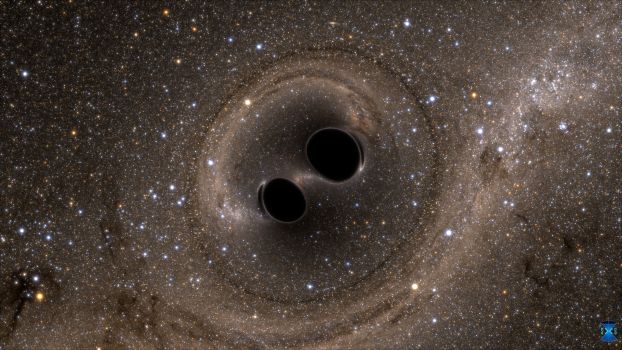
Credit: Simulating eXtreme Spacetimes (SXS) project
From theory to evidence
Ripples in space-time, known as gravitational waves, were first predicted by Albert Einstein in 1916. But they wouldn't be confirmed until 2015, when the U.S. National Science Foundation's Laser Interferometer Gravitational-Wave Observatory (LIGO) detected the waves created by the collision of black holes 1.3 million light-years from Earth.
This groundbreaking work earned physicists Rainer Weiss, Barry Barish and Kip Thorne the 2017 Nobel Prize in physics.
Gravitational waves cause space to stretch and squeeze, which can be measured through LIGO's detection beams. The waves are 1,000 times smaller than the diameter of a proton, so the detectors must be extremely sensitive. LIGO's detectors consist of L-shaped vacuum tubes, each 4 kilometers long — just under 2.5 miles.
An interferometer detects the interference between waves (i.e., light, radio or sound). When similar types of waves are in sync, it creates a larger signal that the interferometer can detect. The more out of sync the waves are, the less of the signal is detectable.
To the future and beyond
Since this first milestone, LIGO's new enhancements have turned the detection of once elusive gravitational waves into a weekly occurrence, opening a new window to the universe.
The observatory has also detected a mysterious object that could be the heaviest neutron star or the lightest black hole ever discovered, and in 2017, alongside the European Virgo detector, recorded the collision of two neutron stars.

Credit: Matt Heintze/Caltech/MIT/LIGO Lab



